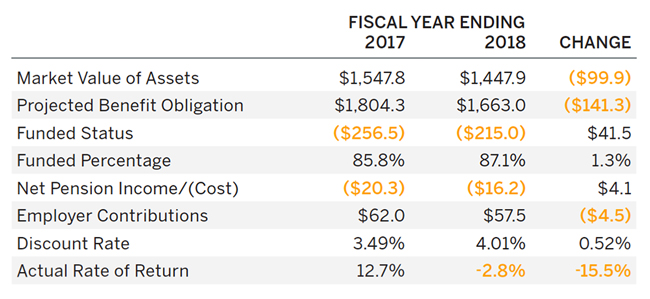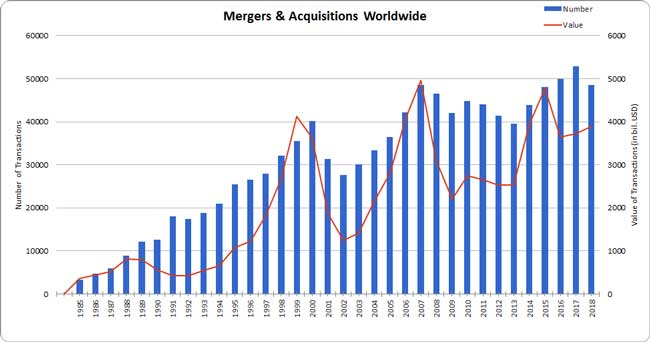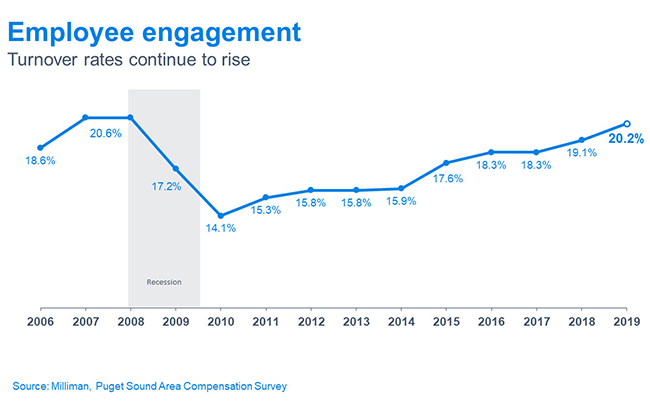Every year we compile a list of our most popular research. In 2019, healthcare and pensions were at the forefront of Milliman’s thought leadership. The most visited publication of the year was the Milliman Medical Index, which this year incorporated an interactive element. Our annual and monthly pension funding studies were also quite popular. Other topics of interest to our readers included proposed prescription drug finance reform, the state of the insurance market in the UAE, blockchain, and single-payer healthcare. The wide variety of articles is indicative of Milliman’s diverse client base and the multitude of business problems we help solve.
Milliman Medical Index By Christopher S. Girod, Susan K. Hart, David M. Liner, Thomas D. Snook, Scott A. Weltz
New this year, the MMI has an interactive tool to build your own family so you can understand your unique healthcare costs.

Pension Funding Index (by Charles J. Clark and Zorast Wadia) and 2019 Corporate Pension Funding Study (By Zorast Wadia, Alan H. Perry, and Charles J. Clark)
The PFI is a monthly look at the funded status of the 100 largest corporate defined benefit pension plans. Here we look back from January to December.
2019 Corporate Pension Funding Study
Now in its 19th year, the Corporate Pension Funding Study is an annual analysis of the financial disclosures of the 100 largest corporate defined benefit pension plan sponsors.
Were there funding improvements in 2018? How were plan years 2018 and 2017 different? And what can we expect to see in 2020 and beyond?
HIGHLIGHTS (FIGURES in $ BILLIONS)

Changing the rebate game: A primer on the HHS proposed rule to shift drug rebates to POS By Gabriela Dieguez, Maggie Alston, Samantha Tomicki
How will the proposed changes to prescription drug financing affect Medicare Part D stakeholders?
An end to manufacturer rebates as we know them today? By Deana Bell, Jennifer Carioto, Matthew Hayes
The proposed rule to make drug manufacturer rebates no longer protected under the Anti-Kickback Statute has broad impacts to federally funded prescription drug programs, especially Medicare Part D.
Market Monitor UAE: Insurance industry report 2018 By Safder Jaffer and Ashad Irshad
What are the latest developments in the UAE insurance market?
On a net profit basis, the industry continued to improve for the third year in a row, and Takaful companies saw a growth in their bottom line in 2018.
Impending merger or acquisition? The health of employee benefit programs can be a make-or-break issue By William Strange
When it comes to M&A activity, there are often some overlooked aspects of a deal that don’t get the attention they deserve. What happens, for example, to unfamiliar retirement and health insurance programs that are part of an acquisition? Employee benefit programs can affect a potential deal—sometimes to the surprise of the acquiring company.
Mergers and Acquisitions Worldwide

Seven trends in compensation By Larry P. Daniels and Lauren S. Busey
Creating competitive compensation packages that ensure employee satisfaction must reach beyond pay to more comprehensive views of what workers want from their companies and jobs.

Congress asked nine questions about single payer. Here are 27 answers.
At its core, a single-payer system is one in which the system’s primary financing (and oftentimes the primary enrollment) comes from a single payer, which is typically the government. Reflecting the many unique ways that the federal and state governments fund and regulate American healthcare, we have identified three different single-payer scenarios, ranging from least disruptive to most disruptive compared to the status quo.
How blockchain technology will disrupt the PBM-payer-pharmacy relationship By Brian N. Anderson, Gregory Callahan, Michael DiPrima
Blockchain could potentially transform the relationship between payers, pharmaceutical manufacturers, wholesalers, and pharmacies by offering an alternative, transparent mechanism for processing, pricing, and validating prescription transactions.
Uses of blockchain
| Property | Use case | Real-world example |
| Immutability | All participants agree on the same history, reducing disputes about historical events. | The country of Georgia implemented a public blockchain for land title transactions. |
| Transparency | Transparency in a marketplace leads to better decision making by all parties. | Walmart implemented blockchain in its food supply chain to track the origin of products from multiple suppliers. |
| Smart contracts | Transparency is not just access to the data. Smart contracts represent transparent access to business logic. | Cryptocurrencies have reduced transfer fees imposed by banks, lowering the cost of money transfers. |
LTSS services in Medicare Advantage Plans By Pedro Alcocer, Robert Eaton, Pamela Laboy
How did the Medicare Advantage marketplace respond in 2019 to CMS’s expanded definition of primarily health-related benefits? What are the demand and costs for LTSS-type services among the elderly and the challenges that MA plans may face in developing these benefits?